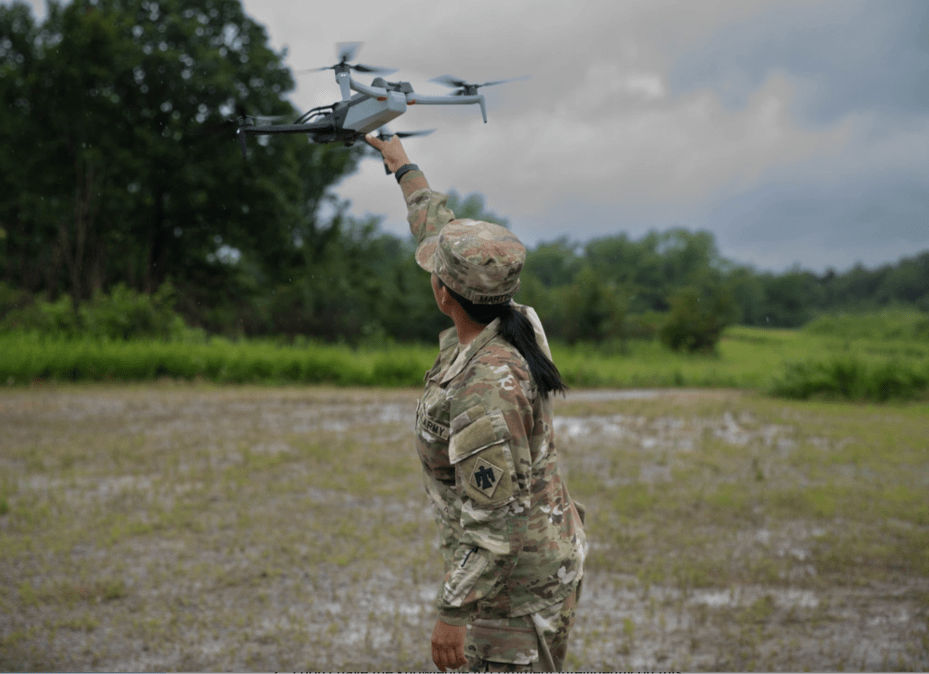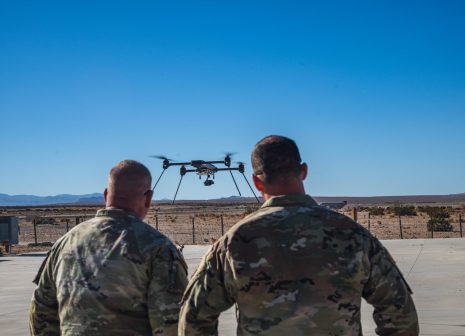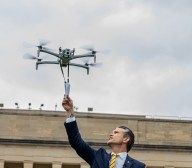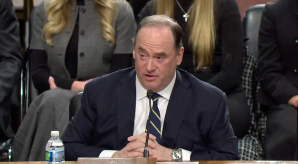What Trump’s order on ‘unleashing American drone dominance’ means for the U.S. military

While the Trump administration’s recently-issued executive order on “Unleashing American Drone Dominance” places a sharp focus on civilian use of unmanned aircraft, the new policy also includes multiple provisions that could have implications for Pentagon and military personnel.
“The Department of Defense must be able to procure, integrate, and train using low-cost, high-performing drones manufactured in the United States,” President Donald Trump wrote in the directive.
This new EO comes at a time when autonomous systems are increasingly proving to be game-changing on contemporary battlefields. Yet despite major investments, all of America’s military services are confronting serious challenges in adopting and deploying different-sized and affordable drones for widespread use.
DefenseScoop asked former defense officials and national security experts to share their analyses regarding the order, in separate conversations following its release last month.
“At first glance, the EO is directionally sound — it signals a strategic interest in accelerating the adoption of commercial unmanned aerial systems in the U.S. and reducing barriers to their use, particularly for testing and training,” Lauren Kahn, senior research analyst at Georgetown University’s Center for Security and Emerging Technology, said. “That’s a positive step.”
David Rothzeid — a venture investor at Shield Capital, Air Force reservist and Defense Innovation Unit alum — echoed that sentiment, saying he views the EO “as a positive and timely move that supports both national security and the U.S. innovation ecosystem.”
“It sends a meaningful demand signal to American entrepreneurs and primes the broader market to accelerate development,” he told DefenseScoop. “That said, although the EO is well-aimed, its long-term impact will depend on execution.”
A longtime procurement official, Rothzeid previously led acquisition pathways at DIU. He argued that the DOD at this point needs to “avoid repeating past mistakes where adversaries seized technological leads due to” slow adoption and over-classification postures at the Pentagon.
“For example, the proliferation of Chinese-created DJI drones in both consumer and defense sectors continues to exacerbate our domestic sourcing. By failing to incubate and scale domestic alternatives earlier, we inadvertently ceded a portion of the Group 1 UAV market to foreign influence,” Rothzeid said, referring to drones on the small end of the spectrum.
Tucked into the new EO is a line that directs the department and military leadership to identify programs that hold potential to be “more cost efficient or lethal” if replaced by drones — and to submit a report to the president on their findings within 90 days of its publication.
“This is included as almost a throwaway because DOD has been doing that during its budget and strategy review,” Mark Cancian, a senior adviser at the Center for Strategic and International Studies, told DefenseScoop.
He pointed to the Army terminating its Apache attack helicopter replacement program, noting that determination was “likely driven by a desire to use drones.”
“Other examples are the large increase in funding for the [Air Force’s] collaborative combat aircraft — a drone that would accompany manned aircraft — and endorsement of the Replicator program, which seeks to develop drone swarms and was started by the Biden administration,” Cancian said.
In Kahn’s view, that specific provision regarding recommendations on drones to replace legacy weapons “risks becoming a box-ticking exercise if services nominate programs they were already planning to retire.”
“However, if taken seriously and used to spur some of the efforts already underway in the department to accelerate the adoption of cheaper, attritable, drones and other precise mass capabilities, it could help rebalance a force still over-invested in costly, vulnerable legacy systems,” she said.
“As Ukraine and Israel have shown in recent days with Operations Spider’s Web and Rising Lion, low-cost UAS can impose asymmetric costs and scale far faster than exquisite platforms — making them strong candidates to replace select ISR, strike, or base defense assets. Still, systems shouldn’t be replaced just for the sake of it; the goal is a high-low mix where attritable drones complement, not supplant, more advanced capabilities,” Kahn told DefenseScoop.
Despite being titled “Delivering Drones to Our Warfighters,” Section 9 of the order spotlights elements that she considers more associated with airspace issues and training — and “less about breaking down challenges the department faces when it comes to acquiring, sustaining, and rapidly scaling UAS, and other emerging capabilities.”
Khan further noted that the EO “entirely overlooks” unmanned surface vehicles, unmanned underwater vehicles, and other autonomous and remotely crewed systems.
Meanwhile, “a welcome provision is the push to allow all platforms on the Blue UAS list to operate on military installations without requiring policy exceptions,” she told DefenseScoop.
Managed by DIU, Blue UAS is a Pentagon program that is designed to help the department rapidly pinpoint and approve secure commercial drones for government use.
“That’s the kind of specific change that can have outsized operational impact by enabling more rapid experimentation and deployment. However, it largely emphasizes access to airspace — an essential and persistent issue, particularly when it comes to deconflicting some of the challenges of airspace above military installations that the DOD itself faces,” Khan said, adding that the directive “largely targets known, second-order problems rather than the deeper, more significant structural barriers the DOD faces when adopting UAS at scale.”
Tom Adams, director of public safety at DroneShield, also said the EO marks a step in the right direction, but suggested more needs to be done.
“[There] were some noticeable gaps in the language related to the authorities for public safety, and critical infrastructure, for example, that I believe is meant to be addressed with more formal legislation,” he said. “I’m looking forward to seeing how Congress tackles this issue that is so crucial to the security of the homeland.”
Rothzeid also spotlighted the directive’s Blue UAS provision in his discussion with DefenseScoop. To him, it’s “critical” for DOD to expand that list and update it with newly approved industry-made capabilities more frequently.
“There are new players with innovative UAS platforms popping up in the space all the time — and while it’s important to make sure UAS platforms are secure and compliant — being more flexible to let new vendors in will accelerate the pace of innovation by widening the number of platforms DOD can procure rapidly,” he said.
Rothzeid offered several other suggestions, beyond what was covered in Trump’s order, that could help the military more rapidly field combat-ready drone systems.
He recommended DOD improve companies’ access to testing ranges, particularly for drones that are built or modified to withstand interference from electromagnetic sources for emergency response or other purposes.
“Startups consistently face delays and red tape when trying to test their systems in realistic electromagnetic environments. This is a critical gap, especially considering that several U.S. platforms sent to Ukraine failed due to inadequate battlefield resilience,” Rothzeid said.
He additionally urged the Trump administration to ensure that the demand signal from the new EO is supported by budget allocations in the near term to enable its implementation.
“Ultimately, policy without procurement falls flat. If this EO is to deliver on its promise, DOD will need to match it with funding, contracting pathways, and accountability to ensure real dollars flow to companies building these next-generation systems,” Rothzeid told DefenseScoop.






